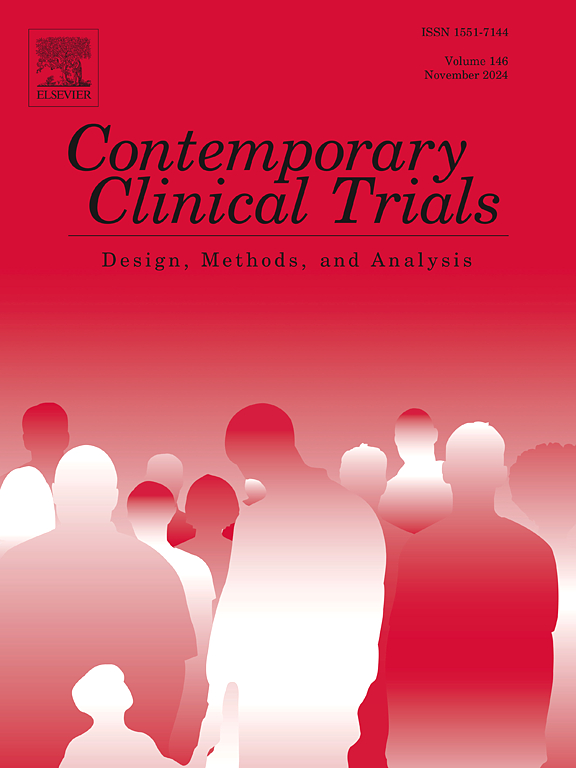Treating seizures faster: The quality improvement in time to treat status epilepticus (QuITT-SE) multicenter randomized stepped wedge clinical trial protocol
IF 2
3区 医学
Q3 MEDICINE, RESEARCH & EXPERIMENTAL
引用次数: 0
Abstract
Background
Acute seizures may evolve into status epilepticus (SE), prolonged and self-sustaining seizures that may result in brain injury or death. Rapid treatment with a benzodiazepine (BZD) is most effective. However, SE treatment remains delayed in many cases. We previously performed a single-center quality improvement study which resulted in more rapid treatment, decreased intensive care utilization, and decreased cost. Now, we are conducting a multicenter trial to test the hypothesis that pragmatic changes in treating acute inpatient seizures reduce time and are implementable across diverse hospital settings.
Methods/Design
We designed a multicenter stepped wedge cluster randomized trial with three unidirectional 12-month steps following one baseline step. After dissemination visits, sites will attempt to implement a standardized bundle consisting of: (1) standardize default BZD to non-IV; (2) target treatment time within 10 min; (3) relocate and bundle items for BZD administration to a single location; (4) prioritize basic seizure first aid as initial assessment; (5) implement SE-specific documentation templates; (6) implement multidisciplinary site QI teams. Our primary outcome is median time from seizure diagnosis to BZD administration. Secondary outcomes are median changes in Pediatric Cerebral Performance Category score, ICU transfer rate, and cost of hospitalization. We will study implementation outcomes using mixed methods based on the Reach, Effectiveness, Adoption, Implementation, Maintenance (RE-AIM) framework.
Discussion
QuITT-SE is designed to test the effect and implementation of a pragmatic set of interventions on treatment times in SE. If successful, results will provide a generalizable roadmap for broad implementation through healthcare systems that should improve outcomes in SE.
Trial registration: Clinicaltrials.gov (NCT06194747). Funded by the National Institutes of Health (R01NS133037).
求助全文
约1分钟内获得全文
求助全文
来源期刊
CiteScore
3.70
自引率
4.50%
发文量
281
审稿时长
44 days
期刊介绍:
Contemporary Clinical Trials is an international peer reviewed journal that publishes manuscripts pertaining to all aspects of clinical trials, including, but not limited to, design, conduct, analysis, regulation and ethics. Manuscripts submitted should appeal to a readership drawn from disciplines including medicine, biostatistics, epidemiology, computer science, management science, behavioural science, pharmaceutical science, and bioethics. Full-length papers and short communications not exceeding 1,500 words, as well as systemic reviews of clinical trials and methodologies will be published. Perspectives/commentaries on current issues and the impact of clinical trials on the practice of medicine and health policy are also welcome.

 求助内容:
求助内容: 应助结果提醒方式:
应助结果提醒方式:


